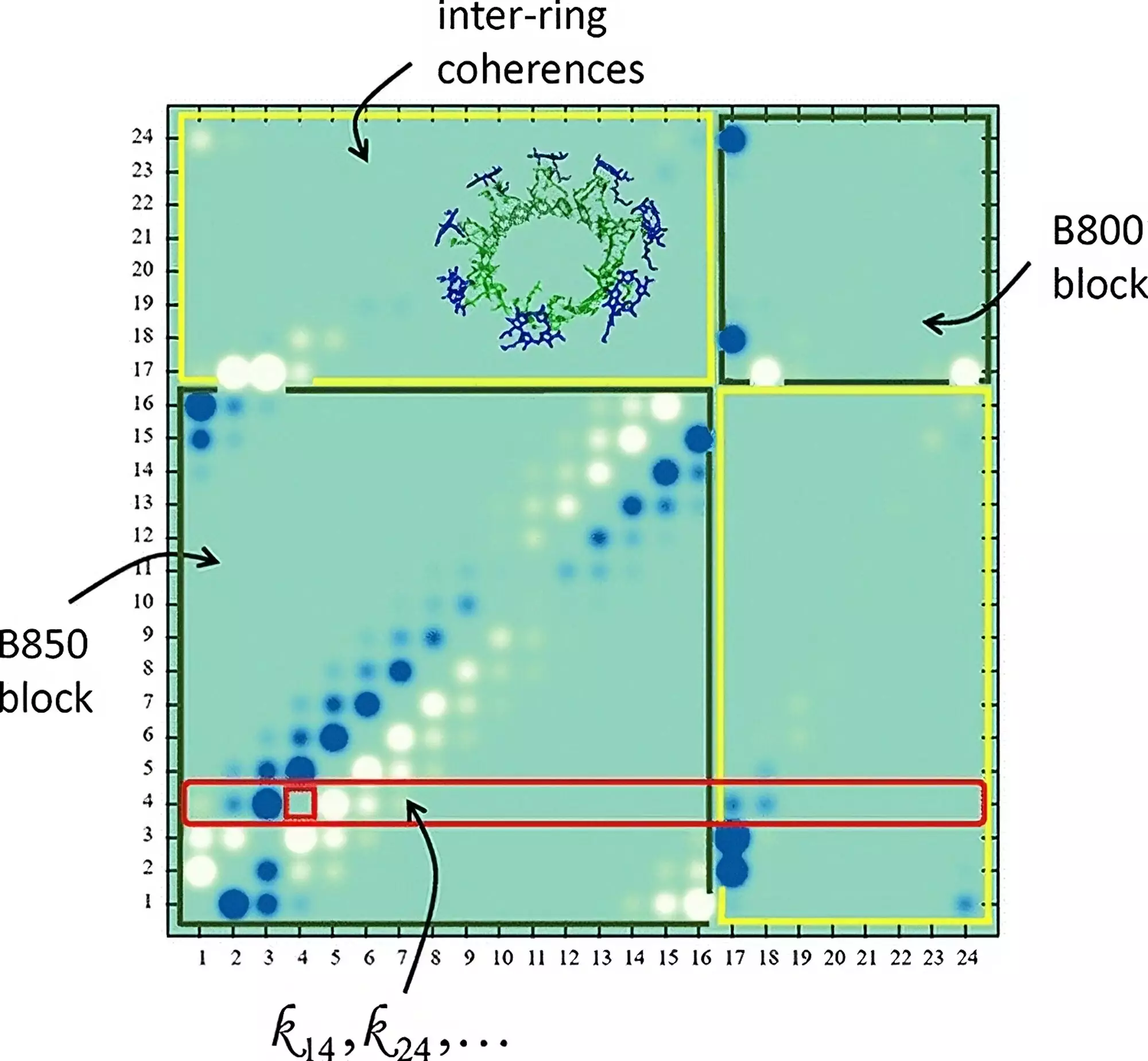Quantum mechanics is a complex field that is difficult to visualize. However, researchers at the University of Illinois Urbana-Champaign have developed a new illustration technique that displays quantum features in an easy-to-read diagram called a coherence map. Using this technique, the researchers were able to study the quantum mechanisms that underlay photosynthesis, the process by which plants and some bacteria use sunlight to convert carbon dioxide and water into food.
The Coherence Map Technique
The coherence map technique is an illustration of the reduced density matrix, a mathematical object that contains all information about a system’s quantum behavior. The reduced density matrix becomes quite large for even modestly sized systems, and all its components are interrelated, making it challenging to analyze. However, coherence maps provide a ton of information that pops out of the pictures just from a glance, making it a valuable tool for theoretical analyses based on quantum mechanics.
The Study
In a study published in The Journal of Physical Chemistry Letters, Nancy Makri, a professor of chemistry at the University of Illinois Urbana-Champaign, and her research group applied coherence maps to analyze computer simulations of photosynthesizing bacteria in a new way. The researchers studied the molecular complex that “harvests” sunlight, absorbing it and transferring its energy to a chemical reaction site where carbon dioxide and water are processed.
Results and Implications
Using coherence maps, the researchers were able to identify the energy transfer pathways in the bacterial light harvesting complex transparently. The complex contains an outer ring and an inner ring of molecules. The outer ring absorbs sunlight, and the inner ring contains the chemical reaction site. The researchers showed that the two rings are connected by the motions of the atoms in the molecules, and coherence maps clearly illustrated that these motions focus energy from the outer ring to the inner ring. This new insight into the photosynthesis mechanism is an important step towards understanding one of the great mysteries of biology, according to Makri.
Makri’s research group reported simulations of the energy transfer mechanism in photosynthesizing bacteria in Science Advances, and the group introduced coherence maps in The Journal of Physical Chemistry B.
The development of the coherence map technique is a significant advancement in studying quantum mechanics. Its simplicity and effectiveness make it a valuable tool for theoretical analyses. The application of coherence maps to the study of photosynthesis has provided important insights into the energy transfer pathways in the bacterial light harvesting complex, leading to a better understanding of the photosynthesis mechanism. The technique has the potential to revolutionize the study of quantum mechanics and has opened up new avenues for research into other complex systems.


Leave a Reply